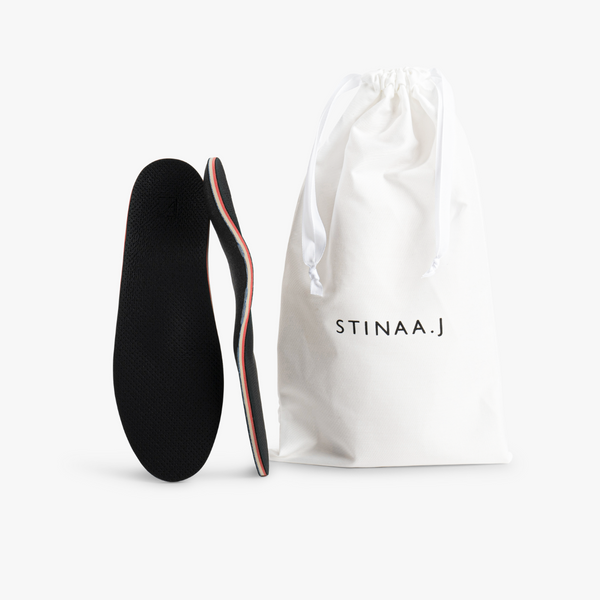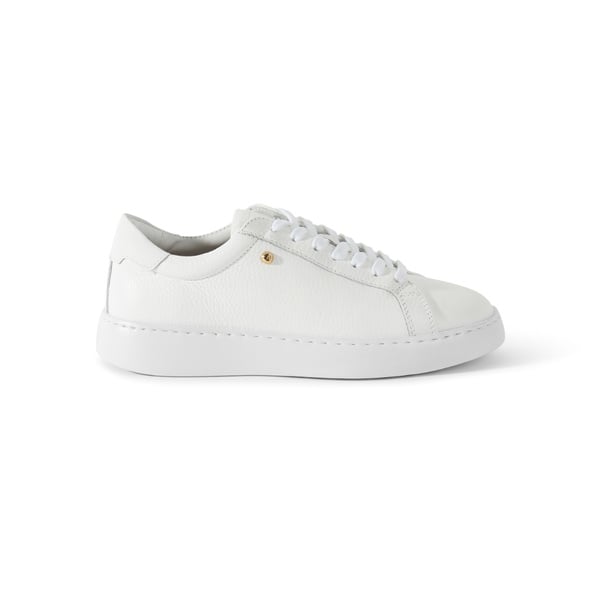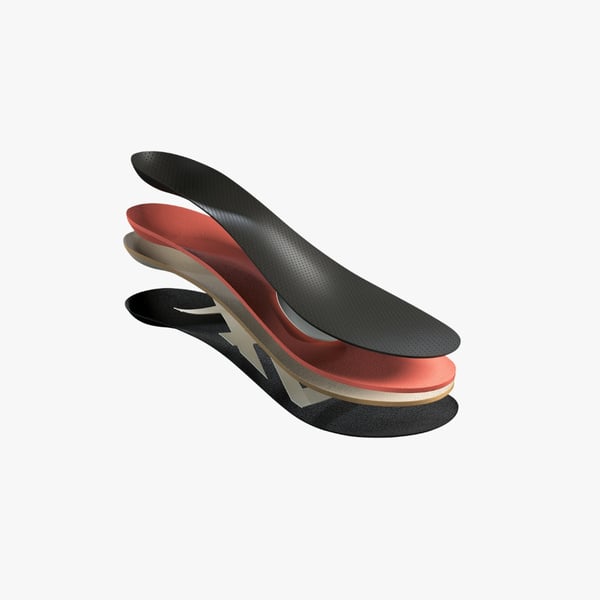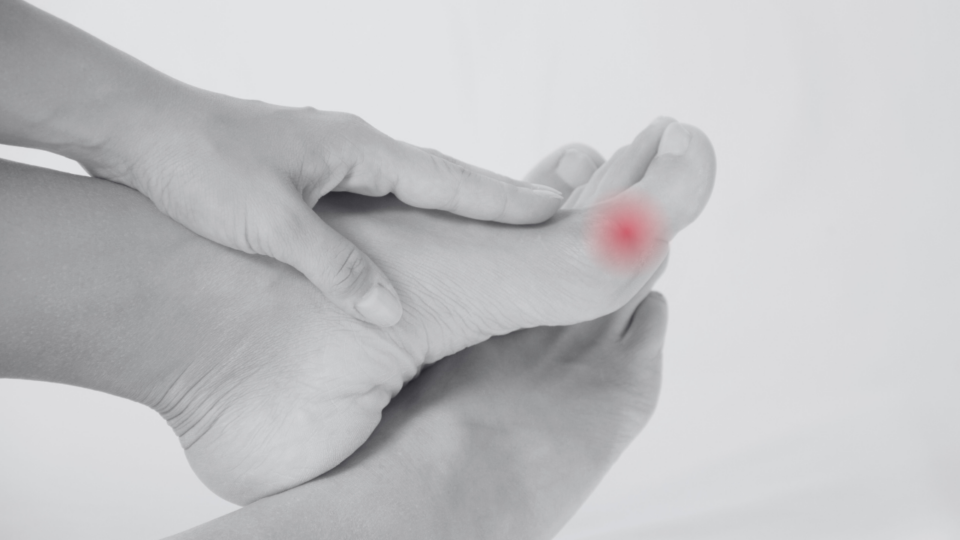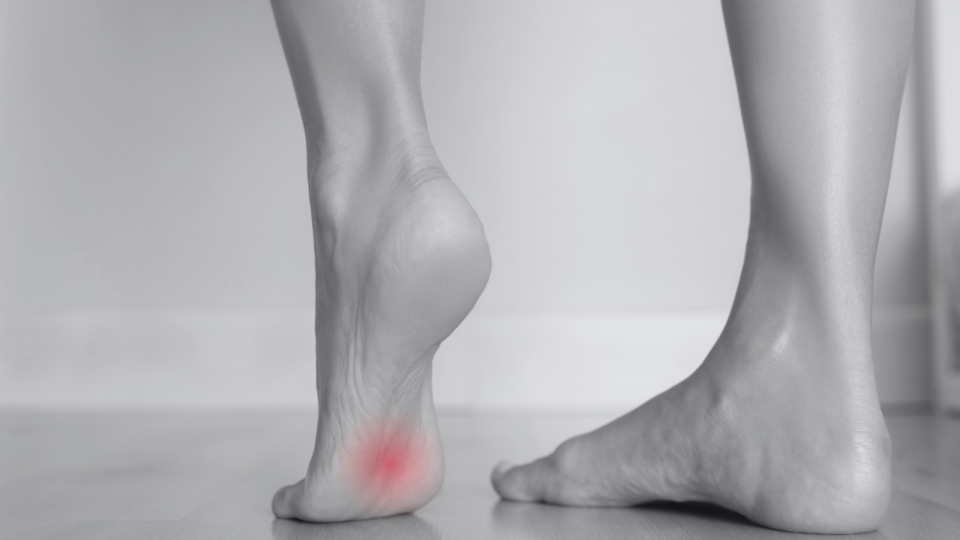A bursa is a small fluid-filled sac that helps cushion and lubricate your joints and bones. When the bursa becomes inflamed, it's called bursitis. With 33 joints in the foot, bursitis can occur in many different areas of the foot.
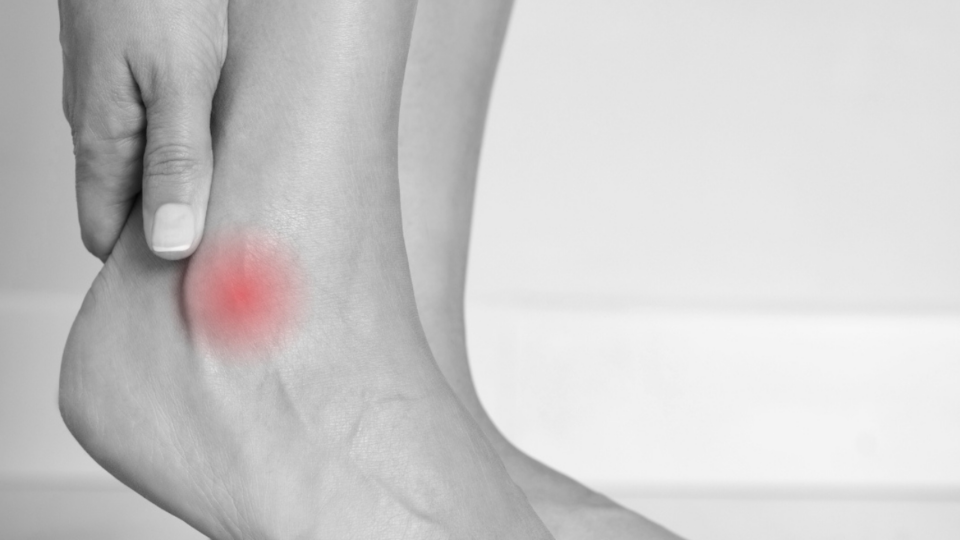
What is bursitis?
In your foot, you have bursae – small fluid-filled sacs known as bursae. They act as cushions between bones and tendon/muscle attachments. Bursae protect the body’s joints from friction and pressure, facilitating movement. If they are subjected to prolonged pressure, there is a risk of inflammation in the bursa, called bursitis.
Common symptoms of Bursitis
With bursitis in the foot, it’s common to experience the following symptoms:
- Pain when walking and running
- Increased pain when standing on tiptoe or bending the foot
- Swelling, redness, or stiffness in the joint
- Pain with movement or touching of the joint
Why do you get bursitis in the foot?
Bursitis is often the result of injury or overuse of the foot. The risk of developing bursitis increases if your feet are subjected to direct pressure, such as wearing tight shoes or high heels. Additionally, repetitive movements like running or jumping and inadequate warm-up before exercise can increase the risk of bursitis. Symptoms can worsen from prolonged walking and standing on hard floors.
Other causes of bursitis may include:
- Haglund’s deformity, where a bone growth on the heel rubs against shoes
- Inadequate warm-up or stretching before exercise or activities
- Gout
- Arthritis, thyroid disorders, or diabetes
- Infections, although this is rare

